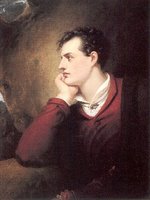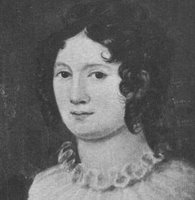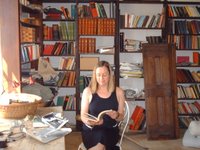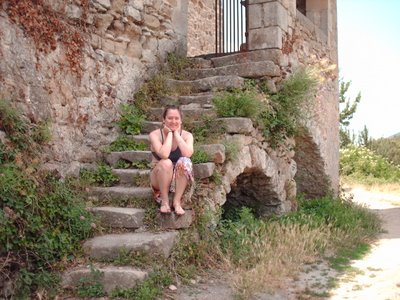Lord Byron was a rock star of Romanticism in the 1810s and 1820s. He was extremely handsome, with a beautifully sculpted face framed by dark curly hair, and many portraitists painted his picture. Though of strong build, he walked with a slight limp, a fact which may only have increased his appeal for women, of whom there were many falling at his feet all over London, as we shall soon see.

By all accounts, Lord Byron was a cruel lover. Not only was he a vain, arrogant womanizer, but he was very famous as well--a deadly combination, as we know in our own time from the gossip that comes out of Hollywood. And he was famous for good reason, because he was the finest poet of his time. Here's a taste from "Childe Harold's Pilgrimage":
Ah! may'st thou ever be what now thou art,
Nor unbeseem the promise of thy spring,
As fair in form, as warm yet pure in heart,
Love's image upon earth without his wing,
And guileless beyond Hope's imagining!
And surely she who now so fondly rears
Thy youth, in thee, thus hourly brightening,
Beholds the rainbow of her future years,
Before whose heavenly hues all sorrow disappears.
Wow. No wonder his half sister had an incestuous relationship with Lord Byron at the same time that he had affairs with Lady Caroline Lamb and Lady Oxford before he married Annabella Milbanke then left her a month after their daughter was born.
Claire Clairmont, herself an aspiring poet, didn't have a prayer of vanquishing him with her love when they met. She was just a silly girl, smitten and speechless. And here's the quote I've been waiting to share with you, something Claire wrote to Lord Byron shortly after they met:
"Do you know I cannot talk to you when I see you? I am so awkward and only feel inclined to take a little stool and sit at your feet."

Oh Claire, Claire. Don't you know The Rules? A girl never gives a guy the upper hand. She does everything to appear unavailable--her dance card is always full, she's not at home when he comes calling.
Poor little vegetarian, atheist, free-loving Claire came to a bad end, of course. She had a daughter "out of wedlock," as they say, and Byron named the baby Allegra and then refused to see Claire ever again. He asked his half sister to raise the child as his own, which she would not do, and so he locked Allegra up in a convent, determined that his illegitimate daughter would be "a Christian and a married woman," but Allegra died in the convent of typhus when she was 5 years old.
I'm not sure what the moral of this story is. Don't fall in love with a famous man? Be damned sure to get full custody? All I know for sure is that as soon as Claire Clairmont told Lord Byron she just wanted to sit silently on a little stool at his feet, all was lost.







